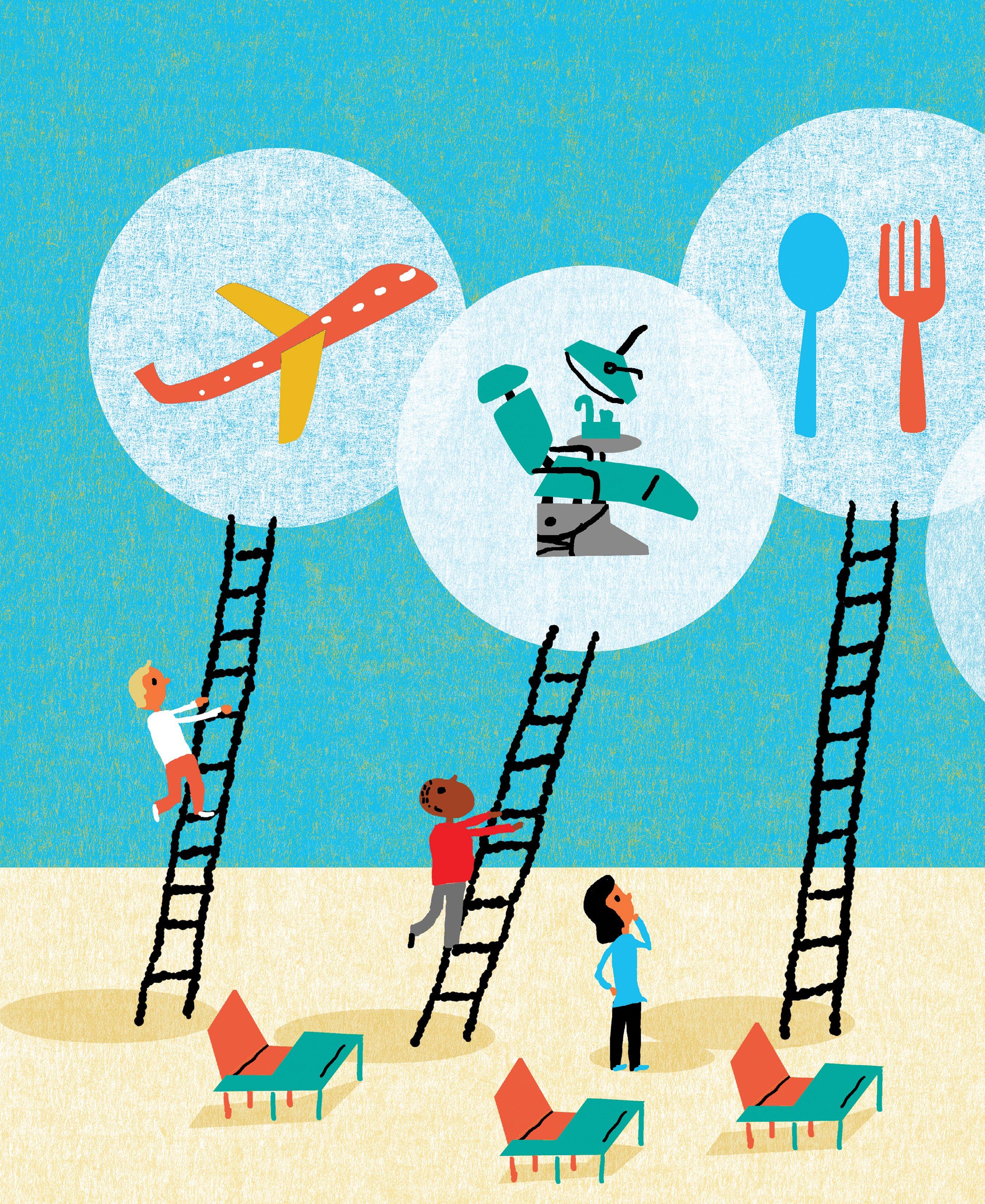
5 minute read
CLASSROOMS WITHOUT WALLS
Hands-on Learning Engages and Better Prepares Students for the Real World
On any given weekday, across Salt Lake Community College’s campuses, dozens of learning scenarios are happening—in places where there are no desks or lecture-driven curriculums or even traditional classroom walls.
Thousands of SLCC students are earning degrees and certifications in programs that rely substantially on active learning, essentially hands-on learning. These learning spaces, often referred to as lab space, emulate the environments students will find in their future careers.
On one hand, it’s obvious that the education in many fields should be rooted in engaged learning. Bill Tovar, associate professor, Professional Driving, puts it bluntly, “You can’t teach how to drive a truck in a classroom.” He recalls how over the last 15-plus years in-the-desk classroom time has diminished in favor of hands-on lab time. “You are still talking to your students about experiences, industry rules and driving instruction, but now it happens predominantly in the cab of the truck.”
SLCC has a long track record of educating and training students for a wide range of industry jobs, and it has built a reputation that nearly guarantees its graduates jobs. Instructors and students believe this reputation is propelled by the small classes and the substantial hands-on instruction and learning, plus the decades of industry experience instructors bring into the “classroom.”
In smaller classes, students are getting more attention from their instructors than is typical in higher education. “The rigor is still there, validated by employers,” says Jennifer Saunders, dean, Salt Lake Technical College. “Students receive more immediate feedback in small classes, and this accelerates their learning so they can move more quickly into the workforce.”
It is common for employers to call, looking for students to employ, and it is why SLCC graduates have a competitive edge once they are in the job market.
“Dentists like to hire our graduates because they know they come out with strong skills and already have experience working with a variety of people in our community clinics,” says Renee Mendenhall, associate professor, Dental Hygiene.
One of the most important attributes of active learning in these nontraditional classrooms is providing up-to-date equipment that students learn to use so they are industry ready.
SLCC’s Automotive Department recently purchased an electric car and curriculum. “Cars are changing fast, and there is a big push for hybrid and electric cars, which entail a lot of technology knowledge that our students need to know,” says Dennis O’Reilly, associate professor, Automotive.
For students in SLCC’s film and TV production classes, providing them with cinema-grade cameras used in the movie industry means when they are on the set, they are familiar and unintimidated with the equipment. “It’s important that we teach students how to use the cameras. It can’t be taught through show-and-tell in class,” says David Lehleitner, assistant professor, Film Production.
Learning through doing is not only how many students learn best, for some it is the primary path to learning. “The way my brain works, I just don’t retain [information] without hands-on,” says Teddy Dalton, a film production student.
Another advantage to hands-on learning is students get a taste of what the job will look and feel like in the “real world,” and they can find out early on whether it is a fit for them.
That's Just The Way My Brain Works
A growing body of research and practice, covering early childhood education to university classrooms demonstrates the benefits of moving beyond traditional lecture-driven approaches in favor of active learning. An article published in Science Magazine (2021), “Active Learning: ‘Hands-on’ Meets ‘Minds-on,'” states that these hands-on approaches put students more in the driver’s seat of their lessons and deepens understanding.
“I will literally fall asleep doing paperwork. I used to in [high school] classes all the time,” says Ian Penderghast, an aviation maintenance student. “I was choosing between engineering and this,” adds fellow student KC Villiard. “I picked this because it is hands-on and I don’t have to sit in a cubicle.”
The findings state that active learning techniques encourage students to produce thoughts and get feedback through interactive settings rather than passively receiving information. Another study, from Harvard, found that while college students think they learn more in traditional lectures than through active learning approaches, they do not. Active learning produces better outcomes.
Community Colleges Play a Critical Role in Skills Training
“Giving students real-life settings to gain hands-on experience loops in students that might otherwise not seek out higher education,” says Rebecca Armitage, assistant director, Career and Technical Education.
Armitage points out that Utah is unique in its significant support for career and technical education programs. Each of the school districts offer access in these areas to a certain extent and then high school students can also take concurrent enrollment courses at SLCC for a deeper dive.
While this article focuses on just a handful of the College’s programs that are steeped in hands-on learning, there are many other SLCC programs that incorporate active learning into the curriculum, sometimes through field work and internships, community service, study abroad, and in competitions, such as SkillsUSA.
“As Utah’s largest community college, we are well aware of the importance of our role in preparing students for Utah’s workforce,” says SLCC President Deneece G. Huftalin. “The skills, professionalism and passion our graduates take with them out into their careers not only reflects back on us, but it also directly, and positively, impacts our local economy.”











